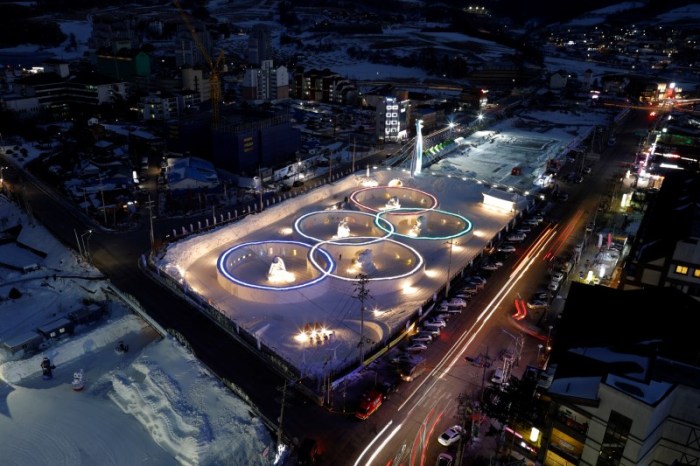By Ricardo Moraes and Stephen Eisenhammer
RIO DE JANEIRO (Reuters) – A mock favela built on Copacabana beach to protest the lack of an Olympic legacy for Rio de Janeiro’s poor was broken up by police on Saturday, who said it was blocking access to the beach. Activists of the group Rio de Paz, which uses protest art to highlight social issues such as violence against women and public security, erected mock shacks, a polluted open sewer and a Brazilian flag peppered with bullet holes on the beach during the early hours of Saturday. At 0800 local time, municipal security officials of the National Guard arrived and asked protesters to pull down the installation. After an hour-long stand-off, the officials started taking down the artwork which was supposed to be on display until early Saturday evening. Activists sat on the sand – many of them with tape over their mouths to symbolize a lack of voice for Rio’s excluded – as guards pulled apart the wooden shacks built next to the Olympic rings which have become a popular tourist spot on the beach. “This is the first time that we’ve ever had a protest on Copacabana stopped like this since we started in 2007,” said Antonio Carlos Costa, founder of Rio de Paz. “It shows how much officials are preoccupied about the public image of the city at the moment.” In a statement, the National Guard said “it had not stopped the protest but only removed structures erected on the sand as they were blocking access for beachgoers.”
For Costa, the Olympics in Rio have brought little gain for the city’s poor who continue to live in precarious conditions in favelas, or slums, without proper sanitation or security.
“Never before has the Olympics been held in such an unequal city” and the “the public money spent on the Games has left no legacy at all for the poor of Rio,” Costa said.
The Olympics is costing Rio about $12 billion. Although nearly 60 percent of that was funded privately, critics argue the public investment has not benefited the wider population.
Instead, they say, investment has improved transport for the city’s elite and benefited construction companies which provided funding to build venues in return for real estate contracts.
“We wanted to show the reality of Rio’s favelas, the rats, the shacks, the bodies covered by bin bags, the stray bullets,” Costa said.
(Writing by Stephen Eisenhammer; Editing by Nina Chestney)
























